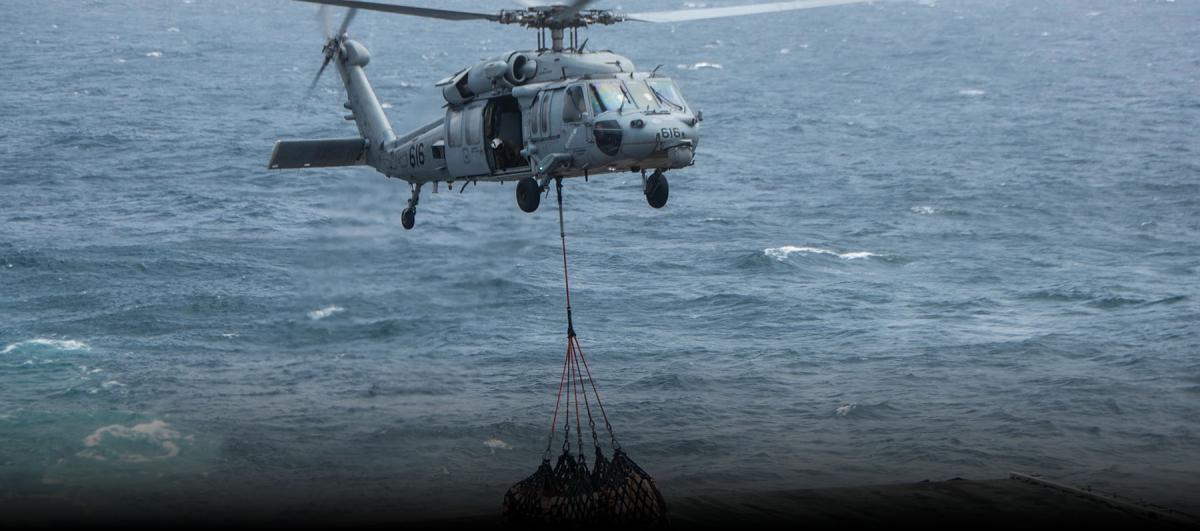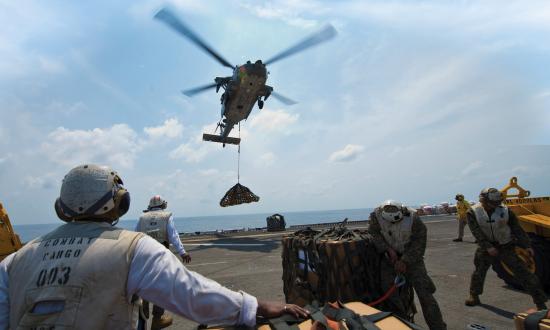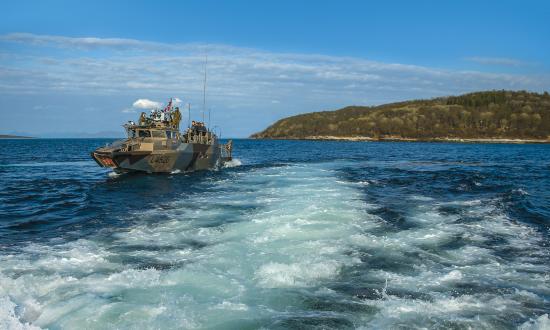President Abraham Lincoln understood the importance of combat logistics. Kentucky was so vital to the Union war effort that Lincoln reportedly said he hoped to have God on his side, but he must have Kentucky.1 The reason Lincoln placed such emphasis on the state is that it possessed significant manufacturing capacity, a large supply of horses and mules, and two rivers that provided avenues into Tennessee and Alabama.2 In other words, Kentucky provided both the material and the means of transport to support Union forces against a peer adversary, the Confederacy.
Combat logistics in the form of underway replenishment gives the Navy its global reach in peace and war. Replenishing a warship’s fuel, weapons, and perishable stores requires technology, careful planning, and hard work. As the Navy refocuses to counter peer adversaries, it must pay keen attention, as Lincoln did, to how it will support campaigns. It must make shrewd investments in technology and underway replenishment concepts.
Improve Rotary Replenishment
Vertical replenishment operations at sea, almost exclusively supported by Helicopter Sea Combat MH-60S Seahawks, require a high level of precision and superb crew coordination. These challenging operations become more so when aircrews encounter load oscillations because of the aerodynamic properties of the external cargo. Correcting the swing of the load to safely deliver it to the receiving ship slows the entire evolution. Fortunately, technology is being developed that will eliminate this problem, which, while merely inefficient in peacetime, can be lethal in combat.
Manufacturers produce stabilization systems that dampen the rotation and oscillation of helicopter external loads.3 By increasing the stability of external cargo, these systems will make underway replenishment operations safer and shorten the time a warship is vulnerable because of maneuvering constraints while logistics ships are in proximity.
Another way to reduce a ship’s vulnerability is to limit the frequency with which it needs to leave its combat station to replenish. This can be accomplished with highly automated unmanned rotorcraft.
Although fully autonomous systems remain aspirational, highly automated systems with a “human in the loop” are available today and improve performance and safety of the replenishment operation. These unmanned aircraft can still make decisions if unprogrammed conditions are encountered.4 A squadron operator could enter a flight plan into a highly automated unmanned rotorcraft to fly a critical repair part to a ship, but the rotorcraft could adjust the flight profile should bad weather or threats emerge. With suitable range (approximately 100 nautical miles) and a limited payload capacity (100–200 pounds), an automated rotorcraft could complete its mission without the receiving ship needing to come off station.
Improve the Replenishment Evolution Model
Despite their benefits, load stabilization and highly autonomous unmanned rotorcraft alone will not be enough to sustain combat operations against a peer adversary. The entire replenishment evolution can benefit from new technology and execution improvements.
The current underway replenishment construct may not be the most agile. Removing warships from the line to resupply them, potentially far from the battle in a sea-space sanctuary, diminishes the time these ships can employ combat power. In addition, maintaining a constant course and speed while in formation with and connected to a logistics ship via hoses and lines makes a warship more vulnerable to long-range weapons, especially hypersonic missiles. If returning a ship to the fight as fast as possible is the highest priority, then a solution to this problem may be found in studying the past.
Mulberries were portable harbors used by the Allies in the Normandy landings to provide combat logistics in the absence of traditional port facilities near the invasion beaches.5 Today, similar artificial logistical space on the ocean is being developed for civilian yachts. Large, inflatable platforms that can support a helipad for yachts can be scaled up and militarized, to function as a landing pad for military rotorcraft, or connected, to form an open-ocean support hub.6 Such a hub could rapidly service a surface combatant with all required stores with the speed and efficiency of a raceway pit crew. Furthermore, this concept, when coupled with an advanced stabilized large vessel lift-on/lift-off crane system, could provide the capability to reload the Mk 41 vertical launching system (VLS) at sea.7 Employing this style of at-sea replenishment would eliminate the need for ships to enter port to rearm their VLS.
Warfare is often viewed through the lens of iconic objects, such as a field of men wearing blue and gray uniforms, the M-4 Sherman tank, and the nuclear-powered aircraft carrier. What those images ignore are the forces that provide combat logistics—the sinews that link the resources to the warfighter. Proper investment in load stabilization, unmanned automation, and underway replenishment hardware and processes will transform at-sea logistics for a modern maritime fight. Although President Lincoln could have spent his time admiring the increase in range and accuracy provided by breech-loading rifled muskets or the implications of a fleet of USS Monitors, he instead focused on the importance of the state that could transport and sustain Union forces. As the sophistication of its potential challengers increases, the Navy must take a page from Lincoln’s book and never lose sight of the importance of combat logistics.
1. James M. McPherson, The Battle Cry of Freedom: The Civil War Era (New York: Oxford University Press, 1988), 284.
2. McPherson, The Battle Cry of Freedom, 284.
3. Vita Inclinata, “Load Stability Systems,” Vitatech.com.
4. Maria B. Catarrasi and LtCol André Haider, DEUA, Future Unmanned System Technologies: Legal and Ethical Implications of Increasing Automation, special report (Kalkar, Germany: Joint Air Power Competence Center, 2016), 7–12.
5. Colin Flint, “The D-Day Landings Were Only One Part of the Operation—The Next Part Needed a Little Bathtub-Inspired Ingenuity to Pull Off,” Business Insider, 3 June 2019.
6. Esther Barney, “Bolt-On Beach Clubs,” Ocean Magazine.
7. Rob Anastasio, “Revolutionary Crane Technology Is in Navy’s Future,” Office of Naval Research press release, 2 June 2010, ONR.navy.mil.






